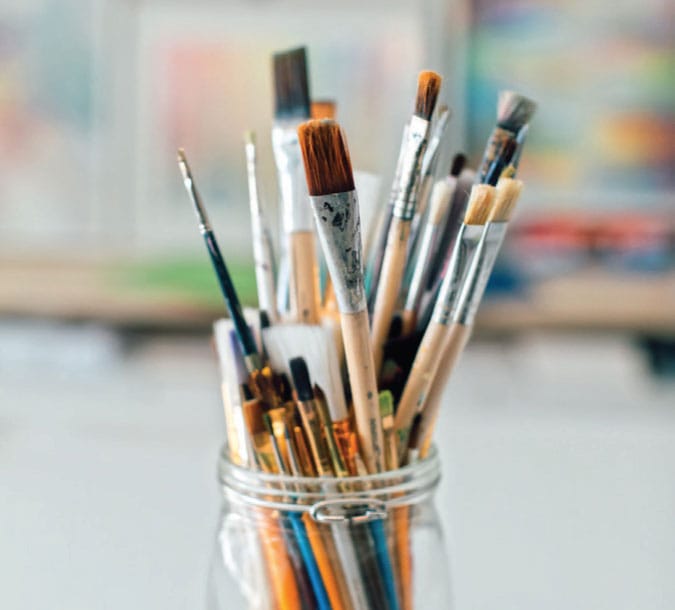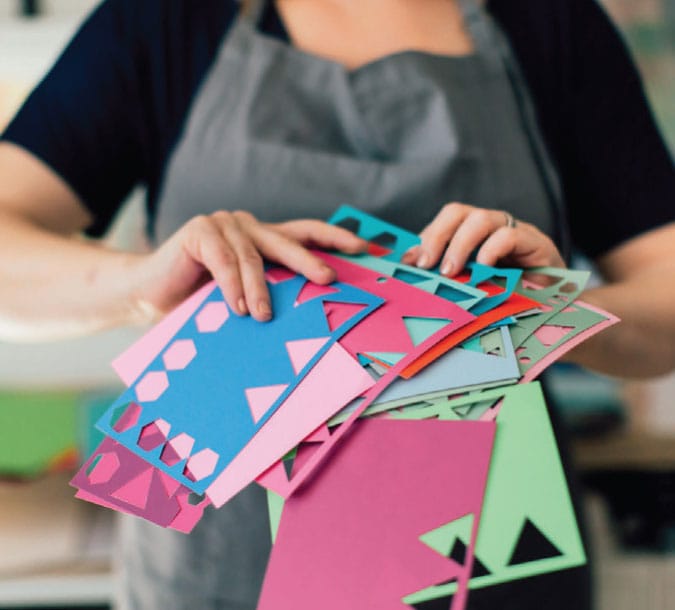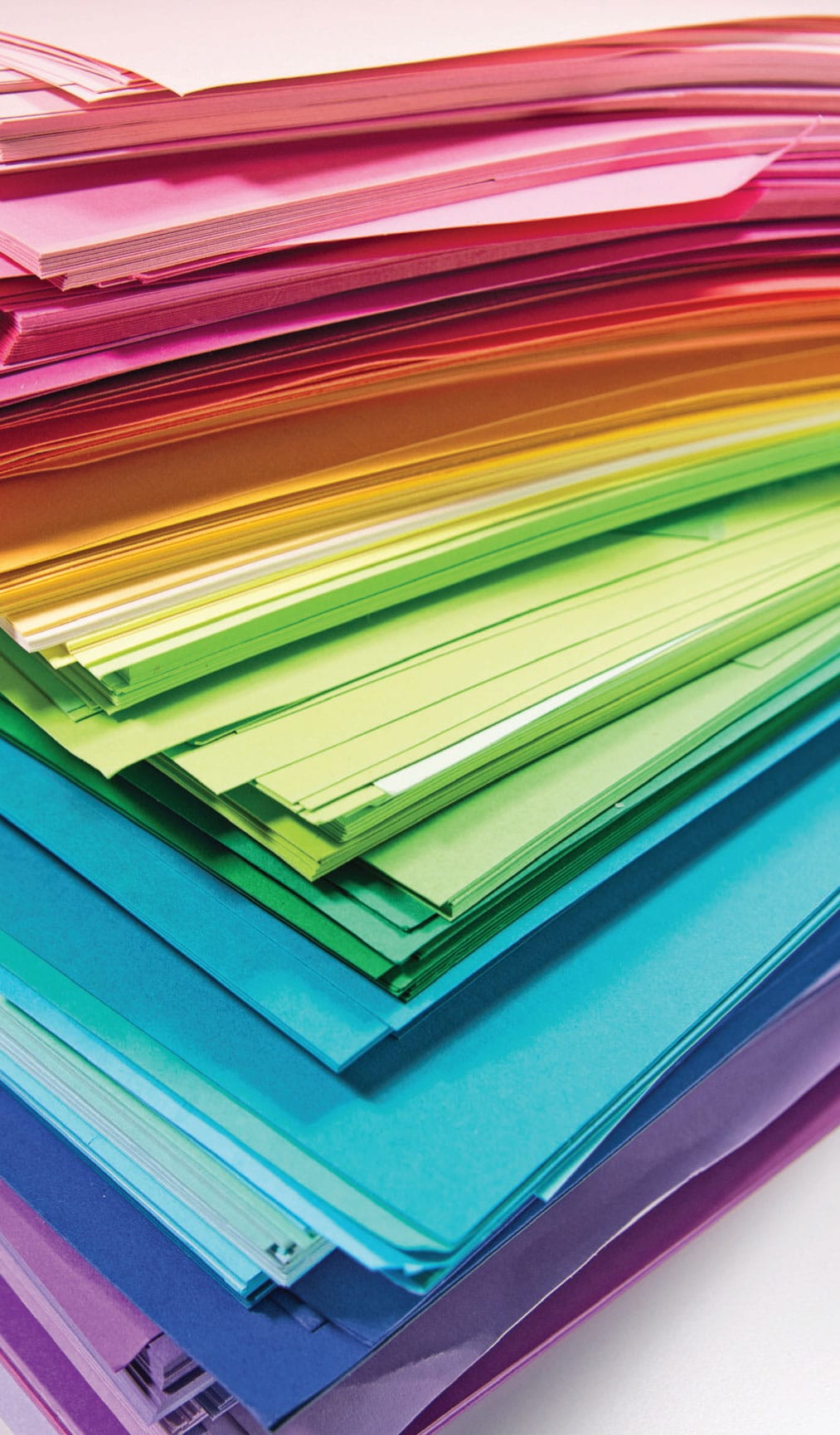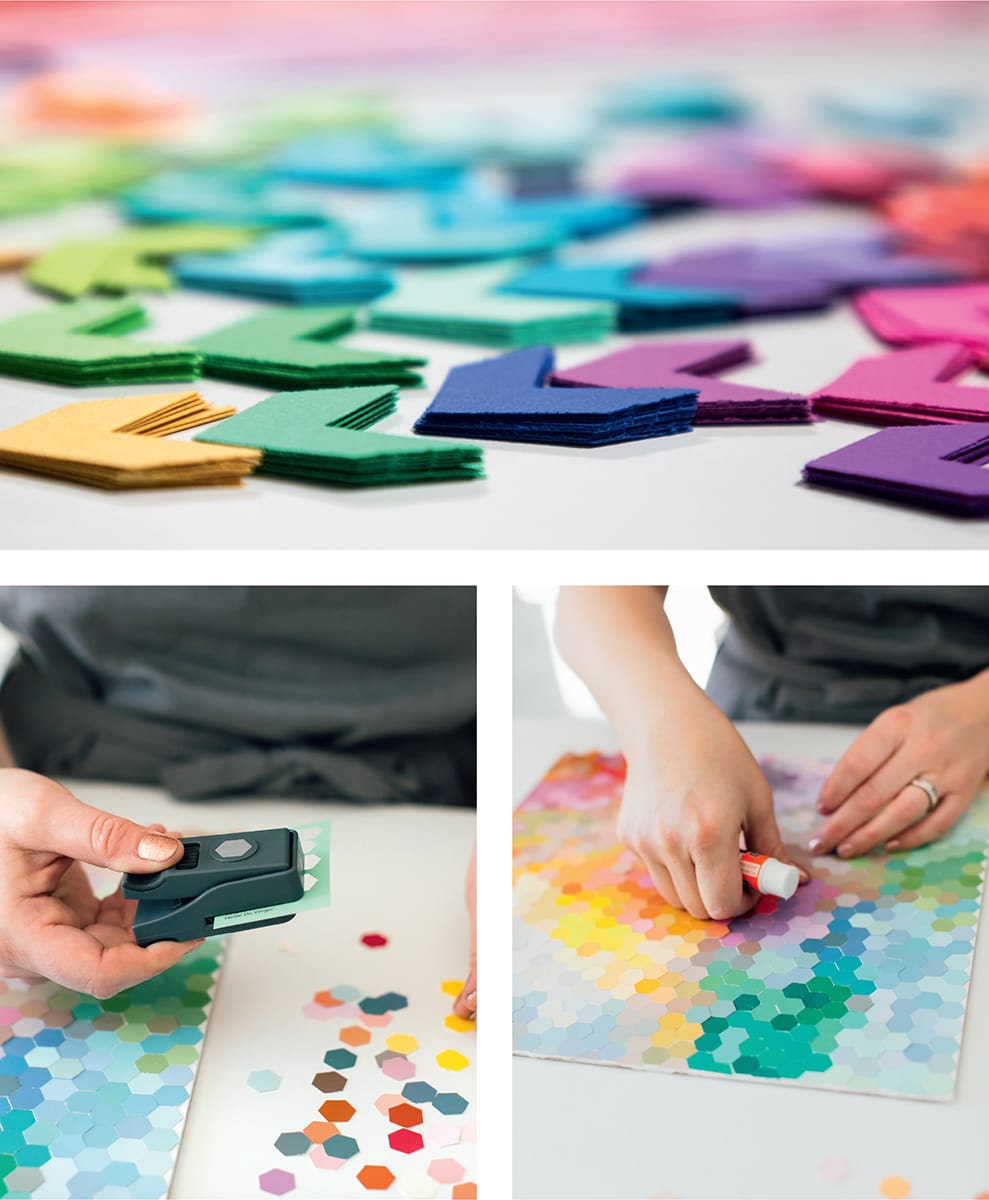Studio Supplies
THE GOLDEN RULE OF STUDIO SUPPLIES: START CHEAP
Oh, art supplies. There are so many art materials in the world. You’d think I’d be invigorated by the possibilities, but I find the volume of art-supply-store choices to be really stressful. It’s like everything in there is a magic wand and, if you know the spell, you can make something amazing. But all the magic wands start at $9.95 for one color. And you need thirty-five. And there are cheaper magic wands over there, but maybe they’re just as good? And what’s the difference between madder lake and quinacridone magenta anyway?
And then there is that Instagram artist who makes their thing look amazing and easy, and you rush to get their kit. But if I want to buy, say, a basic set of six colors and a paintbrush or something, it will probably cost $200 . . . and then you might not even like it. For sure your efforts will fall far short of the professional who’s been using that media for sixteen years. So my policy is: Start cheap.
Here is a truism across all categories: You can always spend more money. In some cases (but not all), you get what you pay for. Deciding on the caliber of material (and cost) depends on your goals. Are you trying to play and learn? I find that if I’m using expensive materials, my play pleasure and learning capacity is radically diminished because I’m so aware of the costs of everything. I get precious, perfectionistic, and miserly. Cheap supplies are better when I’m learning (p.s., I never stop learning). For instance, I have a few nice, framed watercolor paintings and a lot of “used” watercolor paper. Better for me to use cheaper paper and then I won’t have a cha-ching noise dinging in my head every time I make a lousy painting. However, there does come a point when you’re trying to further develop your skills. Once I begin to develop a language or style in a medium, I often choose to upgrade my supplies. As I get better, it helps if my materials also get better.
For sourcing, art supply stores are great. Amazing, beautiful, abundant, usually with knowledgeable salespeople, one stop and easy. I also source and shop around online. There are frequent sales and coupons, fast and free shipping is usually the norm, and it’s easy to find good prices. In addition, some of the big craft stores stock high-quality art materials, and if you can get the coupons and sales, they can be an economical option.
The projects in this book fall into three broad categories: acrylic paints, collage, and watercolors. See each section shown here for details on specifics.



ACRYLIC PAINTS
Acrylic paints are a modern invention made with pigments suspended in a polymer emulsion. They are water soluble and dry into a waterproof film that resembles a plastic skin. They are versatile, can be inexpensive, and have no odor.
For the acrylics projects in this book, I use:
• Student grade/craft acrylic kit in six to eight colors + plenty of white
• Favorite colors: magenta, crimson, cadmium red light, lemon yellow, phthalo blue, lilac, and basic purple
• Palette knife (I like the plastic ones with a small, triangular knife)
• Disposable palette
• Premade, primed canvases in various sizes
• 90 lb. (165 g/m2) all-purpose paper
• Paper towel for cleanup


ACRYLICS PROJECTS
Title |
Skill level |
See page |
Glorious Extravagance |
Beginner |
|
The Classic Schmear |
Beginner to Advanced |
|
The Freud |
Beginner |
|
Whipped Rainbow |
Beginner to Moderate |
COLLAGE
Here’s the good news about collage: You can’t really improve much on the cheap supplies. You can get fancier glue that won’t wrinkle your paper and use any kind of substrate from paper to canvas to board. You can also coat a finished collage with Mod Podge or resin for protection, but the beauty of collage is the simplicity. The collages in this book are generally quick exercises—collage is a great way to do color sketches—for which I use multicolored card stock with various sheens and textures. This type of paper is abundant at any craft store.
For the collage projects in this book I use:
• Magazines, old books, old paintings on paper, colored card stock from the craft store, recycled paint chips
• Glue sticks
• Scissors
• 11” x 15” (28 x 38 cm) white mixed-media paper, 90 lb. (165 g/m2)
• 18” x 24” (45.5 x 61 cm) white mixed-media paper, 90 lb. (165 g/m2)
• Paper punches in various sizes and shapes

COLLAGE PROJECTS
Title |
Skill level |
See page |
Collage Rainbow Wheel |
Beginner |
|
Tri Me |
Beginner |
|
Bring Out Your Dead |
Beginner |
|
Chevron Spectrum |
Medium |
|
Flat Diamond |
Medium |
|
Hex Addict |
Medium |
|
Mandala Hex |
Moderate to Annoying |
|
Hex Appeal |
Moderate to Absurd |

WATERCOLORS
I have had a long-term, on-and-off-again relationship with watercolors. As they say, it’s complicated. I mean, I love watercolors. I looooooooove them. All those colors you can just fit right in your pocket. The ease. The versatility. The luminosity. But they’re also maddeningly capricious. To me, watercolors are like a charming but inconsistent boyfriend who’s hard to dump. I mean, watercolors and I totally have a codependent relationship. They have so much promise, so many delightful colors, they bring me flowers and sweet nothings, and then destroy me with their intransigence. The bad-boyfriend watercolors fail me repeatedly, but then I let them come over because they have so much potential. I can’t trust ’em, but they are so charismatic. With regularity I say, I’m moving on! That’s it! I’m kicking you to the curb! There are plenty of other art supply fish in the sea, like oil paints and resin and gouache. But then those half-pans call to me, so seductively, so enticing, so “easy,” and the 140 lb. paper feels so nice, and honestly how much harm could there be to just drink some wine and paint a few hexagons? Netflix and chill, anyone? But then the next morning I see what a mess I made of my studio, with limp and unsatisfying paintings lying around everywhere, and no one even made me breakfast. Watercolor, I shake my fist at you! (But I love you, never leave me.)
For a list of supplies I use for the watercolor projects in this book, see “Watercolor Kit” on the opposite page.
The majority of the watercolor projects use templates; all of them can be found at the end of this book and can also be downloaded for free from www.josielewis.com or quartoknows.com/page/color-mixing so that you can either scan and print them on your own watercolor paper or download and print them directly.
Note that using stencils or a punch and tracing the shapes is a versatile way to make your own painting templates. Use a pencil with a very hard 6H graphite, which is so light that it disappears when you paint over it.
WATERCOLOR PROJECTS
Title |
Skill Level |
See page |
Template required? |
Mini Mono |
Beginner |
No |
|
Value Gradient Primer |
Beginner |
Yes; see here |
|
What Happens If |
Beginner |
No |
|
Q*bert |
Beginner |
Yes; see here |
|
Dots |
Moderate but Helpful for Beginners |
Yes; see here |
|
Waiting for the Diamonds |
Moderate |
Yes; see here |
|
Seed of Life |
Moderate |
Yes; see here |
|
Diamond Crystals |
Moderate |
Yes; see here |
|
Sashiko |
Moderate to Difficult |
Yes; see here |
|
Radiating Diamonds |
Moderate |
Yes; see here |
|
Antagonistic Complements |
Moderate |
Yes; see here |
|
Faded Hex |
Moderate |
Yes; see here |
|
Working with Neutrals |
Moderate to Advanced |
